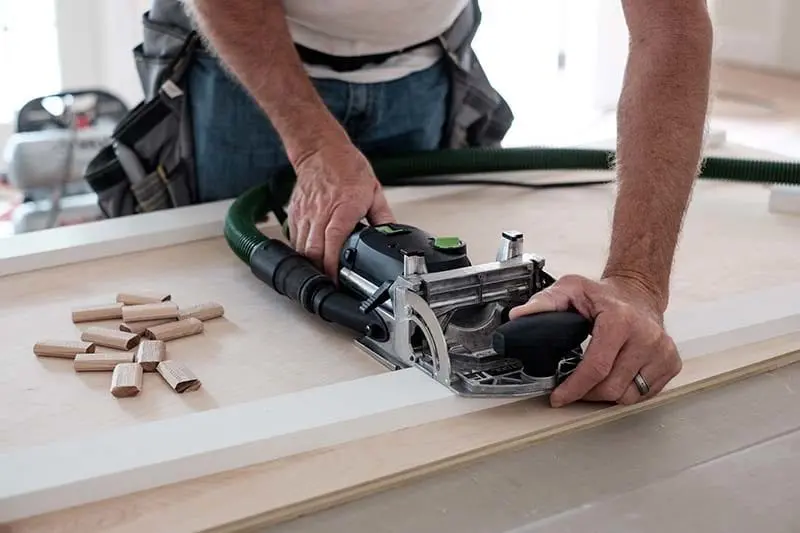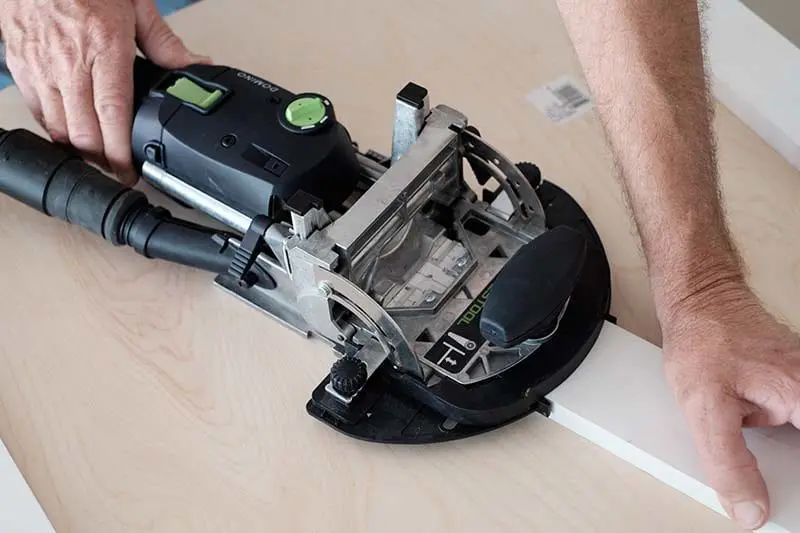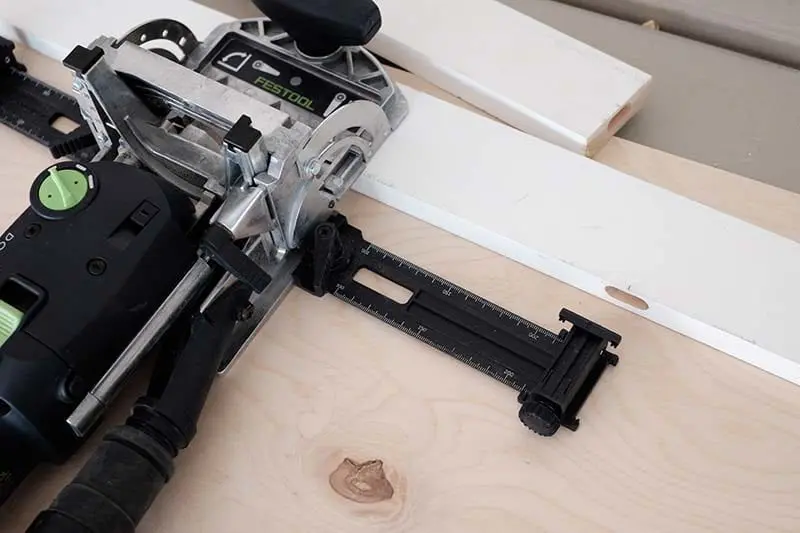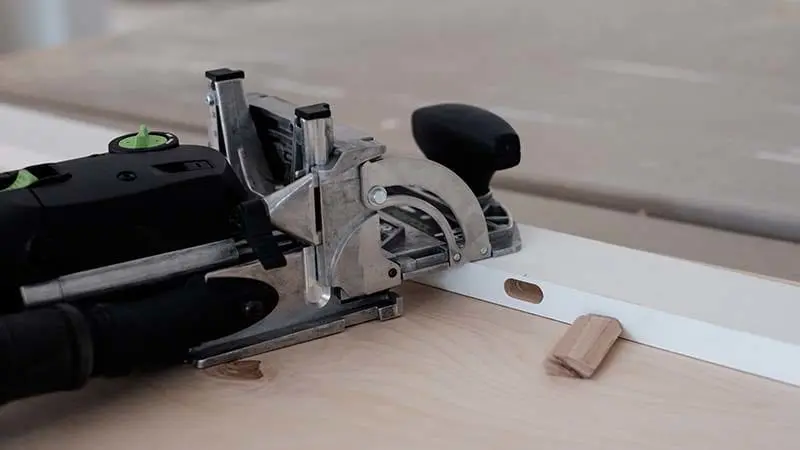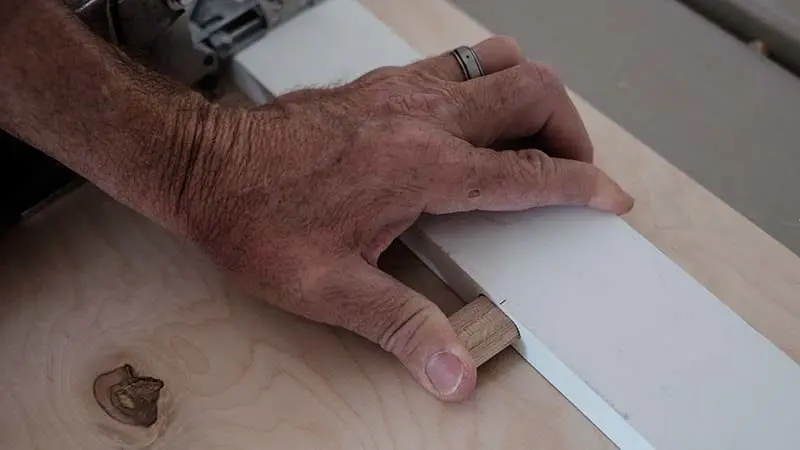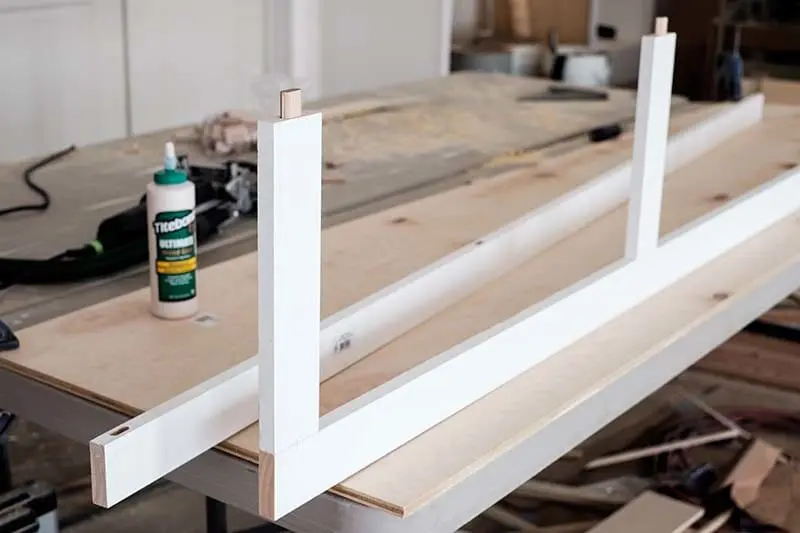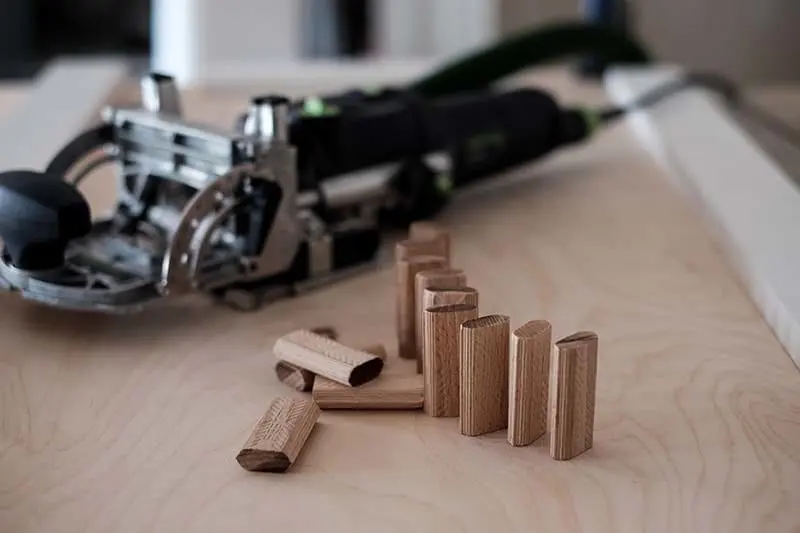You would think that after 35 years in the field of trim carpentry I would have used or owned all of the available tools and equipment on the market. Apparently, I was wrong, with a capital W. This review is about another piece of equipment from the German master tool builder called the Festool Domino DF500. I could sum up the review by just saying “brilliant work” but that would be boring and not very informational so let me expound upon that statement.
In his never-failing quest for perfection, my son Matt went out and bought a Festool Kapex. That was actually my first experience with a Festool product and really the first time I have ever put my hands on one of their tools. It seems that I have a lot to learn even at my advanced age. I don’t feel too bad considering many of my site companions have never even heard of Festool.
As Festool’s mortise and tenon joinery solution, the Domino comes in two sizes – the DF500 that we’re reviewing and the recently released DF 700 Domino XL. Both use the proprietary Domino tenon while the machine itself creates the perfect mortise to match. The XL is great for larger size projects, but for the custom work KentMade, LLC does, the smaller model is perfect for our needs.
First Impressions
Right out of the box there’s a palpable sense that the Festool Domino DF500 is no consumer/prosumer joiner. The tool oozes professional quality. Even the case it comes in had us walking a little taller. The Domino DF500 comes inside Festool’s proprietary Systainer, which is basically a really cool toolbox that interlocks with other Systainers. We’re huge fans of this system because they help to maintain an organized workspace and makes it very simple to grab the right tool for each job.
As soon as we picked up the Festool Domino DF500, we noticed there is quite a bit of weight to this machine – 7 pounds to be exact. This definitely isn’t a problem though because the weight helps to keep the tool stable during use. We also noticed how comfortable it feels in hand. Festool does a fantastic job with ergonomics and the DF500 is no exception. As soon as we picked it up we wanted to get to work.
Getting Started
Setting up the Festool Domino DF500 is a simple process. However, we wouldn’t consider it plug and play. There’s a slight learning curve, but for the seasoned professional this curve isn’t very steep. Once past the learning curve, which is really just all about figuring out what knob does what, set up is incredibly easy. In fact, changing the cutter head only takes a few seconds, whereas changing a biscuit joiner blade can take several minutes. In our business, anything that saves time without sacrificing quality is gold. All in all, it only took one view of Festool’s “Getting Started” video of the Domino DF500 to become familiar with the tool’s adjustments.
A picture is worth a thousand words, so I can only imagine how many a moving picture must be worth. Since you’re not here to read a novel, check out the DF500 Getting Started video for yourself.
Shop Test
The Festool Domino DF500 is loaded with different features that all have specific uses. There are a few features that we don’t typically use day to day, however, we really wanted to test all of the capabilities. So we decided to test out each feature and accessory in our shop and really put the machine through the paces.
Bare Bones:
First, we just set the Domino DF500 up without any accessories and got a feel for how the machine works. We grabbed some leftover pine, positioned the machine, and made the first cut. What a dream! The DF500 was incredibly stable and slides very smoothly.
Trim Stop:
The trim stop that comes with the Festool Domino DF500 set is very useful for narrow pieces. It’s mostly used for cutting the mortise into the end of a board. This accessory is easily secured to the machine and is really great for dialing in the center of the cut and allowing us to make identical cuts quickly. We gave it a shot and within a couple of minutes we had set the trim stop up and had already made a few identical cuts into some stile material. This accessory alone is a huge time saver when joining face frames.
Cross Stop:
The cross stop is designed for joining boards together to create tabletops or bench tops. It allowed us to bore mortises at the same spacing without having to measure where each mortise should go. Once again, this accessory is another big time saver. Assembly and setup was simple with the turn of a couple of knobs. Within 10 minutes we were successfully edge joining a pair of boards.
Support Bracket:
The support bracket is basically an attachment that adds support to the Domino DF500, especially when using the machine vertically. It attached easily to the base of the tool and it worked as advertised. It’s a perfect accessory for creating vertical mortises when joining cabinet sides and bases.
Dust Collection:
With Festool’s CT 26 E Dust collector attached to the machine, each mortise was perfectly clear of any debris or shavings and there was almost no dust to be seen. This is an area that Festool prides itself on, and it really shows. There’s definitely something to be said for leaving a work area clean and free of dust. Using the Domino in concert with the dust extractor ensures that debris doesn’t become an issue when it comes to the perfect tenon fit.
Functional Features We Love
The Festool Domino DF500 is chock-full of features but there were a few that really stood out to us. Our favorite features all have to do with the setup of the machine. Everything is precise and easy to adjust.
First is setting the mortise depth. Along the side of the DF500 is a lever and depth gauge that allows for quick selection of the depth of the mortise. All that needs to be done is select the depth that coincides with the Domino that is being used and it’s locked into place.
Next is setting the height of the mortise. On the same side of the Domino DF500 as the mortise depth gauge is the height gauge. The front fence raises and lowers which controls where the cutter head will come into contact with the material. The gauge allows for quick setting the height of the mortise by acting as a stop for the front fence.
Finally is a feature that is typically used along with the cross stop attachment. There’s a knob on top of the machine that changes the width of the mortise. The first setting is for cutting a precisely wide mortise for the Domino to fit in. However, there are two more settings that create a wider mortise so that the Domino fits in a little looser. This is a perfect adjustment for joining boards for tabletops or bench tops. First we use the original setting on the first cut to act as an alignment pin. Then turn the knob to set the mortise cut wider and make the rest of our cuts using the cross stop. This is a handy feature because it allows us to perfectly align boards without having to spend too much time fussing with fitting every Domino perfectly.
In the Field
Our field test consisted of several built-ins, a couple of mirror surrounds, and a couple of slab tops to put the Festool Domino DF500 to the test in the real world.
I found the DF500 to be extremely stable and accurate, allowing perfect rail and stile alignment with one process. Used much like a biscuit joiner, the Domino produces what I call a floating tenon joint. I found this joinery to be far superior to pocket screws for face frames and much faster than creating a traditional mortise and tenon joint.
Face frames can be built in many different ways and since they are fastened to the cabinetry do not have to be structural per se. However, the true test of this system was the many craftsman-style doors we built on site. Cabinet doors can be very difficult to build on-site because of the accuracy required in this joinery. Historically I have always built doors in the shop utilizing the “superior“ equipment to create a door to be proud of. I may never build another door in the shop again…as long as I have the Domino with me.
With the Domino, I can create a door from scratch in 20 minutes or less. The tenon system allows me to concentrate on the detailing and panel alignment with no regard to the structure. A simple operation with the Domino system, a little Titebond three and you will have structural corners that will outlast most cabinet doors on the market.
Let’s talk about the dust collection. Let me say this clearly, do not use the Domino without the dust collector attached. The continuous removal of drill chips is necessary for the unit to work as intended. Without it, you’ll end up with small amounts of dust and chips inside your mortise, affecting the precision of the fit. You’ll also have to deal with the same debris that falls outside, creating eye and lung hazards along with leaving additional cleanup to be done. The Festool dust collection system is state of the art, and since little escapes the Festool CT 26 E, we can set up inside the home with the air on. That feature alone is worth the cost.
Conclusion
Diving deeper into Festool’s lineup, I can honestly say that they produce brilliantly engineered site-friendly tools. The addition of the Kapex, Track Saw, and Domino has upped our game in the fine trim arena, allowing us to take on projects that most others won’t.
There’s literally nothing to hate about the Festool Domino DF500, except maybe the cost. Considering that the Domino is a machine that makes short work of otherwise tedious millwork, the cost becomes less and less cumbersome. On-site, any tool that saves time without sacrificing any quality is worth having, and the Domino DF500 has not only saved us time but has also delivered top-quality joinery.
Festool Domino DF500 Specifications
- Power Source: 120V AC
- Motor: 420 watts
- No Load Speed: 24,300 RPM
- Mortise Cut Diameter: 5/6/8/10 mm
- Miter Routing: 0 – 90 degree
- Miter Positive Stops: 0, 22.5, 45, 67.5, 90 degrees
- Stepped Stops: 16/20/22/25/28/36/40 mm
- Routing Depth: 12/15/20/25/28 mm
- Routing Height: 5 – 30 mm
- Weight: 7 pounds
- Price: $1019 (Basic), $1,099 (Set, including Cross Stop and Trim Stop)


